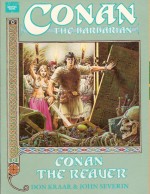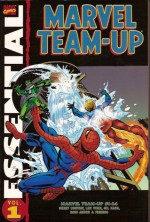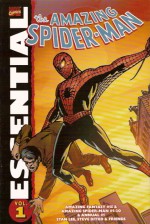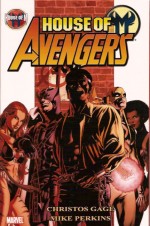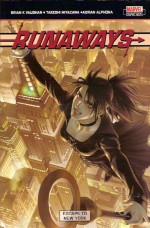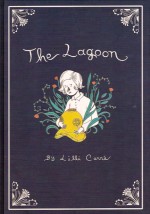
By Stan Lee, Jack Kirby, Roy Thomas, Werner Roth, Dick Ayers & various (Marvel)
ISBN: 978-1-90415-963-6
In 1963 things really took off for the budding Marvel Comics as Stan Lee and Jack Kirby expanded their diminutive line of action titles, putting a bunch of relatively new super-heroes (including hot off the presses Iron Man) together as the Avengers, launching a decidedly different war comic in Sgt Fury and his Howling Commandos and creating a group of alienated heroic teenagers who were gathered together to fight a rather specific threat to humanity.
The eponymously entitled X-Men #1 (September 1963) introduced Cyclops, Iceman, Angel and the Beast: very special students of Professor Charles Xavier, a wheelchair-bound telepath dedicated to brokering peace and integration between the masses of humanity and the gradually emerging race of mutant Homo Superior. The story opens as the students welcome their newest classmate, Jean Grey, a beautiful young woman with the ability to move objects with her mind.
No sooner has the Professor explained their mission than an actual Evil Mutant, Magneto, single-handedly takes over the American missile base Cape Citadel. A seemingly unstoppable threat, the master of magnetism is nonetheless driven off by the young heroes on their first mission.
It doesn’t sound like much, but the gritty power of Kirby’s art, solidly inked by Golden Age veteran Paul Reinman, imparted a raw dynamism to the tale which carried the bi-monthly book irresistibly forward. ‘No One Can Stop the Vanisher!’ introduced a federal government connection in FBI agent Fred Duncan, who requested the teens’ assistance in capturing a teleporting mutant who threatened to steal US military secrets.
Issue #3’s ‘Beware of the Blob!’ featured a rare lapse of judgement as Professor X invited a sideshow freak into the team only to be rebuffed by the felonious mutant. Impervious to harm the Blob used his carnival cronies to attack the team, before they could come after him…
With X-Men #4 (March 1964) a thematic sea-change occurred as Magneto returned with ‘The Brotherhood of Evil Mutants!’ intent on conquering a South American country to establish a global powerbase. Mastermind, Toad, Quicksilver and the Scarlet Witch were very much his unwilling thralls in the bombastic struggle that followed, but from then on the heroes were the hunted prey of the malevolent mutants. ‘Trapped: One X-Man!’ in issue #5 saw early results in that secret war as Angel was abducted to Magneto’s orbiting satellite base Asteroid M, and only a desperate battle at the edge of space could save him…
‘Sub-Mariner Joins the Evil Mutants!’ is a self-explanatory tale of gripping intensity elevated to magical levels of artistic quality as the superb Chic Stone replaced Reinman as inker for the rest of Kirby’s tenure, and genuine progress occurred in ‘The Return of the Blob!’ as their mentor left on a secret mission, but not before appointing Cyclops acting team leader. Comedy relief was provided as Lee and Kirby introduced Beast and Iceman to the Beatnik inspired “youth scene” but the high action quotient came courtesy of the troubled teaming of the Blob and Magneto’s brotherhood.
Another invulnerable mutant debuted in ‘Unus the Untouchable!’ a wrestler with an invisible force field who tried to join the Brotherhood by offering to bring them an X-Man. Also notable is the first real incident of “anti-mutant hysteria” when a mob attacked the Beast, a theme that would become a cornerstone of the X-Men mythos.
X-Men #9 is the first true masterpiece of this celebrated title. ‘Enter, the Avengers!’ reunited the mutants with Professor X in the wilds of Europe, as the deadly Lucifer attempted to destroy the world with a super-bomb, subsequently manipulating the teens into an all-out battle with the awesome Avengers. This is still a perfect Marvel comic story today, as is its follow-up ‘The Coming of Ka-Zar!’ a wild excursion to Antarctica, featuring the discovery of the Antediluvian Savage Land and the modern incarnation of one of Marvel/Timely’s oldest heroes (Kazar the Great originated in Marvel Comics #1 November 1939). Dinosaurs, lost cities, spectacular locations, mystery and all-out action: it doesn’t get better than this…
Another turning point occurred in #11 with ‘The Triumph of Magneto!’ as X-Men and Brotherhood both searched for a fantastically powered being called The Stranger. None are aware of his true identity and purpose, but when the Evil mutants found him it spelt the end of their war…
With Magneto gone and the Brotherhood broken Kirby relinquished the pencilling to other hands, although he provided layouts and design for a few more issues. Alex Toth and Vince Colletta proved an uncomfortable mix for #12’s tense drama ‘The Origin of Professor X!’ a two-part saga that introduced Xavier’s half brother Cain Marko and revealed his mystic transformation into an unstoppable human engine of destruction.
The story concluded with ‘Where Walks the Juggernaut’, a compelling tension-drenched tale guest-starring the Human Torch, but most notable for the introduction of penciller Werner Roth (using the name Jay Gavin) who would be associated with the mutants for the next half decade. His inker for this first outing was the infallible Joe Sinnott. Roth was an unsung veteran of the industry, working for the company in the 1950s on such star features as Apache Kid and the inexplicably durable Kid Colt, Outlaw, as well as Mandrake the Magician for King Features Comics and Man from U.N.C.L.E. for Gold Key. As with many pseudonymous creators it was his DC commitments (mostly romance stories) that forced him to disguise his moonlighting until Marvel grew big enough to offer him full-time work.
‘Among us Stalk the Sentinels!’ from issue #14 (inked by Colletta), celebrated the team’s elevation to monthly publication with the first chapter of a three-part saga that introduced anthropologist Bolivar Trask’s solution to the threat of Mutant takeover: super scientific robots that would protect humanity. Sadly their definition of “protect” varied wildly from the expected, but what can you expect when a social scientist dabbles in high-energy physics and engineering?
The X-Men took the battle to the Sentinels secret base and became ‘Prisoners of the Mysterious Master Mold!’ before wrapping up their ferrous foes with ‘The Supreme Sacrifice!’. Veteran Dick Ayers joined as inker with the second chapter and his clean line blended perfectly with Roth’s clean, classicist pencils. They remained a team for years, adding vital continuity to this quirky but never top-selling series.
X-Men #17 dealt with the aftermath of the battle, probably the last time the US Army and government openly approved of the team’s efforts, and the sedate nature of ‘…And None Shall Survive!’ enabled the story to generate a genuine air of apprehension as the Xavier Mansion was taken over by an old foe who picked them off one by one until only the youngest was left to battle alone in the climactic conclusion ‘If Iceman Should Fail..!’
‘Lo! Now Shall Appear… The Mimic!’ in #19 was Stan Lee’s last script, a punchy tale of a troubled teen with the power to copy the knowledge, powers and abilities of anyone in close proximity, before the writing reins were turned over to Roy Thomas in #20, who promptly jumped in guns blazing with ‘I, Lucifer…’ an alien invasion yarn that returned Xavier’s arch-nemesis as well as Unus the Untouchable and the Blob, revealed how Professor X lost the use of his legs, and, with the concluding part ‘From Whence Comes Dominus?’, completely made the book his own.
At this time Marvel Comics had a vast and growing following among older teens and college kids, and the youthful Thomas spoke and wrote as they did. Coupled with his easy delight in large casts this made X-Men a very welcoming read for we adolescents…
The next two-parter resurrected the old Avengers villain Count Nefaria, who used illusion casting technology and a band of other heroes’ second-string foes (Unicorn, Porcupine, Plantman, Scarecrow and the Eel, if you’re wondering) to hold Washington DC hostage and frame the X-Men for the entire scheme. ‘Divided… We Fall!’ and ‘To Save a City!’ comprise a fast-paced, old-fashioned goodies vs. baddies epic with a decided sting in the tail, and this excellent black and white compendium concludes with another standard plot – Evil Scientist Grows Giant Bugs…
‘The Plague of… the Locust!’ from X-Men #24 isn’t the most memorable tale in the canon but reads well enough and has the added drama of Marvel Girl being forced to leave the team to go to college; another deft sop to the audience as it enabled many future epics to include Campus life in the action-packed, fun-filled mix…
These quirky tales are a million miles removed from the angst-ridden, breast-beating, cripplingly convoluted X-brand of today’s Marvel, and in many ways are all the better for it. Well drawn, highly readable stories are never unwelcome or out of favour though, and it should be remembered that everything here informs so very much of the mutant monolith. These are stories for the dedicated fan and newest convert, and never better packaged than in this economical tome. Everyone should have this book.
© 1963, 1964, 1965, 1966, 1999 Marvel Characters, Inc. All Rights Reserved.

